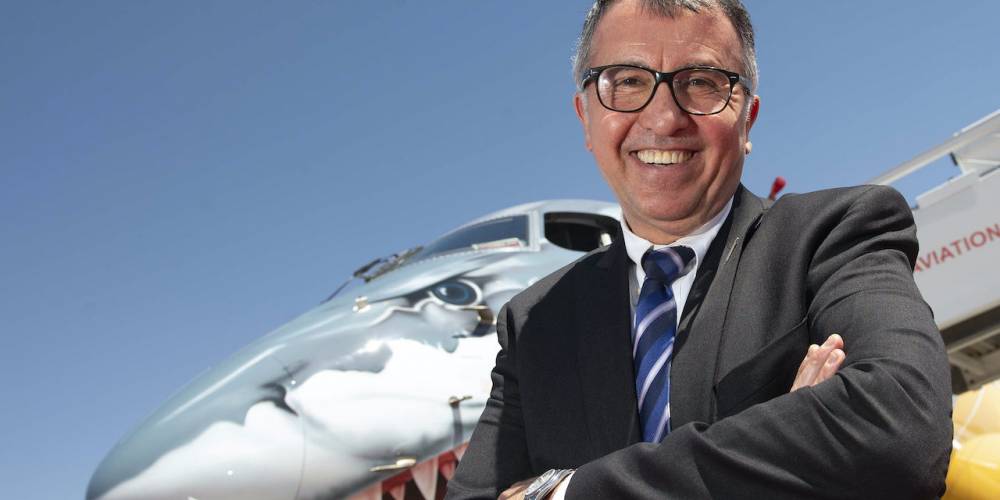Embraer’s Middle East and Africa commercial unit head, Hussein Dabbas, sees big prospects in his region for the company’s E-Jets and future projects. (Photo: Embraer)
Embraer’s stated belief that the Covid-19 pandemic has created new opportunities for it to expand the fleet of E-Jets as airlines review their networks and adapt to changed traveling behavior applies acutely to the Middle East, as the pandemic interrupts traditional long-haul-to-long-haul traffic streams and gives rise to more interregional travel, according to the head of Embraer’s commercial aircraft unit for the Middle East and Africa, Hussein Dabbas. The new environment has also spurred strong interest in the Brazilian OEM’s updated concept for a next-generation 70- to 90-seat turboprop, he added.
“The appetite for [small narrowbody] purchases is absolutely coming back,” Dabbas told AIN . “Airlines need to restructure to return to profit. The aviation industry pre-Covid and post-Covid is very different,” he said, quoting the advice from management consultant Peter F. Drucker that “the greatest danger in times of turbulence is not the turbulence; it is to act with yesterday’s logic.”
While long-haul traffic largely characterized Middle East air transport pre-Covid, markets between countries within the Gulf Cooperation Council, namely Bahrain, Kuwait, Oman, Qatar, Saudi Arabia, and the United Arab Emirates, have grown, as has, to a lesser extent, the level of domestic travel. The Middle East counts only a limited number of countries, such as Saudi Arabia and Egypt, with a big domestic air travel market.
More and more airlines now recognize the need for “fleet rightsizing” and a shift to smaller-capacity, more versatile aircraft to match weaker demand, connect secondary cities or feed the region’s mega hubs from smaller cities, noted Dabbas. Even some low-cost carriers have begun to recognize the benefits of operating a dual fleet of narrowbody and regional aircraft to access certain markets, he said. “They are in contact with us,” revealed Dabbas. “They are realizing that on many routes they serve the Embraer regional jet is the right size,” adding that independent data point to the need for more profitable smaller airplanes to better match demand. Up to 53 percent of domestic and interregional flights in the Middle East depart with fewer than 120 passengers on board, 82 percent leave with fewer than 150 passengers, and 57 percent of domestic and interregional routes have less than one daily flight. “Aircraft with up to 150 seats will be instrumental in how quickly […]
